by Mark Harvey
Out of the crooked timber of humanity, no straight thing was ever made. —Immanuel Kant
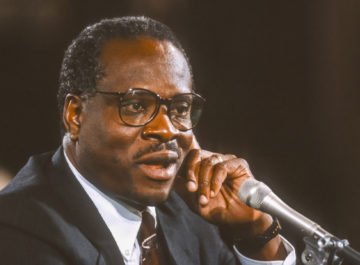
I have a couple of friends in my county who might be considered high-powered on the local level. One is a district judge and the other is a county commissioner. I’ve invited the judge to a few local gatherings that support relatively benign conservation groups. He has always declined, saying that he may at some point have to rule on one of their cases, so he doesn’t want any appearance of supporting the group outside of court. I recently invited the county commissioner to a benefit dinner for another conservation group. He accepted the invitation but insisted on paying his way through a donation to the organization as he didn’t want to accept any gift from me. Compared to some of the all-powerful Supreme Court justices like Clarence Thomas and Samuel Alito, who rule the land, their ethics are studied and consistent. On Chief Justice John Robert’s court, their ethics might be considered quaint and would find no home.
Thomas and Alito have both accepted extravagant paid vacations worth tens and hundreds of thousands of dollars by political operatives and businessmen who have a lot to gain from having Supreme Court decisions go their way. In Alito’s case, he joined hedge-fund billionaire Paul Singer on his jet to Alaska for a fishing trip in 2008 and then failed to recuse himself on a 2014 Supreme Court decision that ensured Singer netted billions of dollars from a business deal. ProPublica, arguably the best investigative journalism operation in the world, wrote about the story in June. Anticipating the story when ProPublica sent him a list of questions about the Singer trip, Alito wrote a sort of preemptive editorial in the Wall Street Journal defending the trip—before the story was even written.
Part of Alito’s defense of flying on Singer’s jet to Alaska was that there was an empty seat that would have otherwise gone unused. That feeble excuse harkens back to the days of the notoriously corrupt New York Alderman, George Washington Plunkitt, who made the famous distinction between “honest graft” and “dishonest graft.” Serving in the New York City government in the late 19th century, Plunkitt knew in advance what lands would be necessary to complete a public park. So he bought the land and then sold it to the city at a very tidy profit. As he put it, “There’s an honest graft, and I’m an example of how it works. I might sum up the whole thing by sayin’: ‘I seen my opportunities and I took ’em.’”
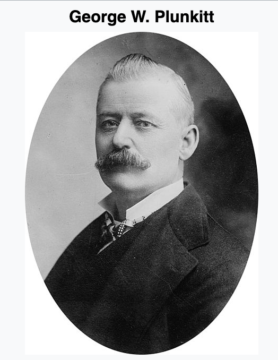
What I like about Plunkitt is that he was quite direct and open about his “honest graft” and didn’t try to come across as a moralizer. Alito, in his black robes and elevated seat on the Supreme Court, gave the sort of convoluted excuse for taking a free trip and then ruling in favor of his benefactor that would embarrass a kindergartner caught with his hand in the cookie jar.
The Supreme Court is located in a neoclassical marble building at 1 First Street in Washington DC. The building is less than 100 years old and previously, the justices met in the old Senate chambers at the Capitol building. It was President William Howard Taft, the only man to ever serve as both president of the United States and a Supreme Court Judge, who proposed a separate building from Congress to emphasize the independence of the judiciary. The old senate chambers were also cramped and unpleasant and consequently, justices of that era did most of their work from home.
It’s an impressive building about 380 feet wide, 300 feet deep, and 90 feet high. Its marble comes from Vermont, Alabama, and Italy. The entrance to the court is loaded with symbols to represent the rule of law and justice. There are two statues made by sculptor James Earl Fraser, one a female depicting The Contemplation of Justice, the other a male depicting The Guardian of the Authority of Law. Inside the courtroom, there are massive friezes of historical figures representing ancient men of good judgment, such as Hammurabi, Moses, Solomon, Lycurgus, Confucius, and Octavian. The justices themselves wear somber black robes and sit on an elevated dais in front of four massive pillars.
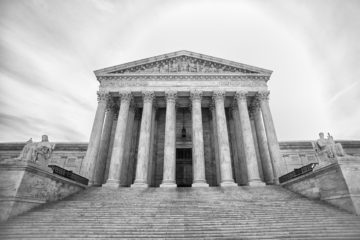
It’s a good look, right? The whole effect—the marble, the steps, the statues, the friezes, the pillars, and the robes would convince most anyone of the probity, rectitude, decency, and integrity of the highest court in the land. And then there’s Justice Clarence Thomas, who comes along to sully that whole image. In another expose, ProPublica uncovered the dozens of lavish trips and gifts Thomas has accepted over the years from billionaire Harlan Crowe and other uber-wealthy businessmen. The largesse and the excess are breathtaking and include at least 38 destination vacations paid for by rich guys. There’s the trip to Indonesia on a private jet with a private chef and 162-foot yacht that ProPublica estimates would have cost Thomas $500,000 had he paid for it himself. There are jet trips to Jackson Hole, Wyoming, the Bahamas, Florida, and Jamaica.
Thomas must have tremendous discipline to accept what amounts to millions of dollars of free vacations and never discuss pending cases with his benefactors. The ability to make impartial rulings that would affect the many rich men he’s vacationed with warrants a marble statue of Thomas boarding a private yacht while wearing a blindfold. Step aside, Solomon!
A wag in the New York Times comment section suggested that we may as well accept this sort of graft and have the justices adorn their robes with their major sponsors like race car drivers or soccer players. I could even imagine a corporate draft resembling the NFL or NBA every time a seat becomes vacant. Newly appointed justices would be photographed with bright smiles, holding up a robe emblazoned with the logo of whatever tycoon or major company bought them.
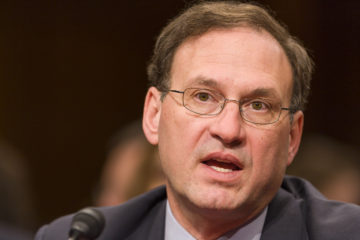
Seeing Alito and Thomas wantonly abuse their positions, I’m not sure why I’ve long assumed that our nine justices were at least trying to be ethical. I actually cringe at my naivete. But when I was a child, my mother took us to the Supreme Court to hear a case in the massive chambers and I think it had an impact. There was no way these men (and back then, it was all men) sitting in this great hall with their black robes could be corrupt. The doors were too big, the halls were too echoey, and the language too ornate for any bit of corruption. Cringe.
I don’t think all of our justices have been corrupt. For instance, I doubt if now-retired justice David Souter took any fancy vacations on someone else’s dime. For one, he didn’t like fancy things and was notoriously frugal. He is said to have eaten the same lunch every day at his desk—a yogurt and an apple—and would eat the entire apple, including the core. He preferred Boston over Paris and would repair his own roof on an old farmhouse in New Hampshire. The man was tremendously accomplished with his Harvard education and Rhodes Scholarship but wore no airs. Appointed by George Bush Sr., his appointment was meant to be a victory for the far right, but Souter proved to be a moderate justice, more often than not voting with the left on progressive issues.
In his self-exculpatory Wall Street Journal piece, Justice Alito says he didn’t recuse himself from the big 2014 Supreme Court decision involving Argentine debt and his fishing buddy, Paul Singer, because he didn’t know that Singer was involved in the case. His words were,
In the one case in which review was granted, Republic of Argentina v. NML Capital, Mr. Singer’s name did not appear in either the certiorari petition, the brief in opposition, or the merits briefs. Because his name did not appear in these filings, I was unaware of his connection with any of the listed entities, and I had no good reason to be aware of that.
Unaware of Singer’s connection? Singer was the CEO and founder of NML Capital. And the efforts of NML capital to be paid by Argentina for sovereign debt were so heavily reported prior to the case that I even knew the details, though I’m not particularly interested in sovereign debt. They say the cover-up is always worse than the crime. Every public relations agency worth their consulting fees advises clients caught in a transgression to quickly apologize without excuses. Alito obviously never got that memo and I don’t envision the words he used to slither out of the mess ever being carved into any friezes after he dies.
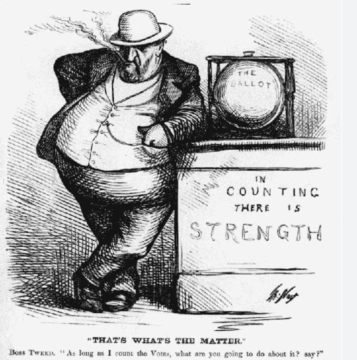
George Washinton Plunkitt grew up very poor in New York City and his education was, as he puts it, “three winters when I was a boy.” He was a central player in Tammany Hall, that long-standing organization that symbolized corruption and graft in early America. While Plunkitt certainly made a handsome fortune in his role, Tammany Hall is described by Richard Croker (one of Tammany’s bosses at the turn of the late 19th century) as the organization to help the disenfranchised, even if by unsavory means. In an 1897 interview he said,
Think of the hundreds of foreigners dumped into our city. They are too old to go to school. There is not a mugwump who would shake hands with them . . . Tammany looks after them for the sake of their vote, grafts them upon the Republic, makes citizens of them in short; and although you may not like our motives or our methods, what other agency is there by which so long a row could have been hoed so quickly or so well? If we go down into the gutter, it is because there are men in the gutter, and you have got to go where they are if you are to do anything with them.
Now that’s my kind of graft: the out-in-the-open graft aiming to line some pockets, sure, but making no pretenses about it and aiming to help some of the real immigrant outcasts in the process. The graft of Alito and Thomas is more the stuff aimed at helping the fly-fishing and sovereign-debt-holding classes, all dressed up as casual friendships that couldn’t possibly cloud their judgments.
It was arguably the graft of Tammany Hall that led to “muckraking” journalism. Muckraking was a crude way of describing investigative journalism that exposed corruption, labor abuse, child abuse, and fraud. Lincoln Steffens’ 1902 expose in McClure’s Magazine on St. Louis Politics, Tweed Days in St. Louis, about Tammany-style politics in St. Louis was considered by some to be the first article of this style, though there were actually a number of strong investigative pieces prior to this. The Muckrakers uncovered scandal after scandal, abuse after abuse in the prisons, city governments, businesses, orphanages, lynching sites, and more. President Theodore Roosevelt first coined the term based on the character from Pilgrim’s Progress, the man with the muck-rake. And Roosevelt prized the hard-hitting investigative journalists of his time as he pressed for reform.
If there’s a moral to this story, it may be as simple as, send in whatever donation you can to the best muckrakers in the business, ProPublica. The organization is a formidable and fearless operation that does nothing less than exemplary work exposing corruption in modern-day America. Based in New York City and only 15 years in existence, ProPublica has won about every prestigious journalism award given, including multiple Pulitzer Prizes, the George Polk Award, and the Peabody Award.
A sampling from the stories featured on today’s ProPublica website include questionable military justice in the Navy (ProPublica is currently suing the Navy to release records), wage theft in New York City, junk science in parental custody cases, gun violence in Tennessee and much more. Past stories have included major exposes on hate crimes, tax evasions by the wealthy, industrial cancer-causing pollution, and scams by major medical facilities.
ProPublica’s stories on Alito and Thomas have further disillusioned my school-boy notions about the higher moral authority of the Supreme Court. But so be it. I’m all the wiser for it. And I just sent in my donation to this admirable group of muckrakers.
